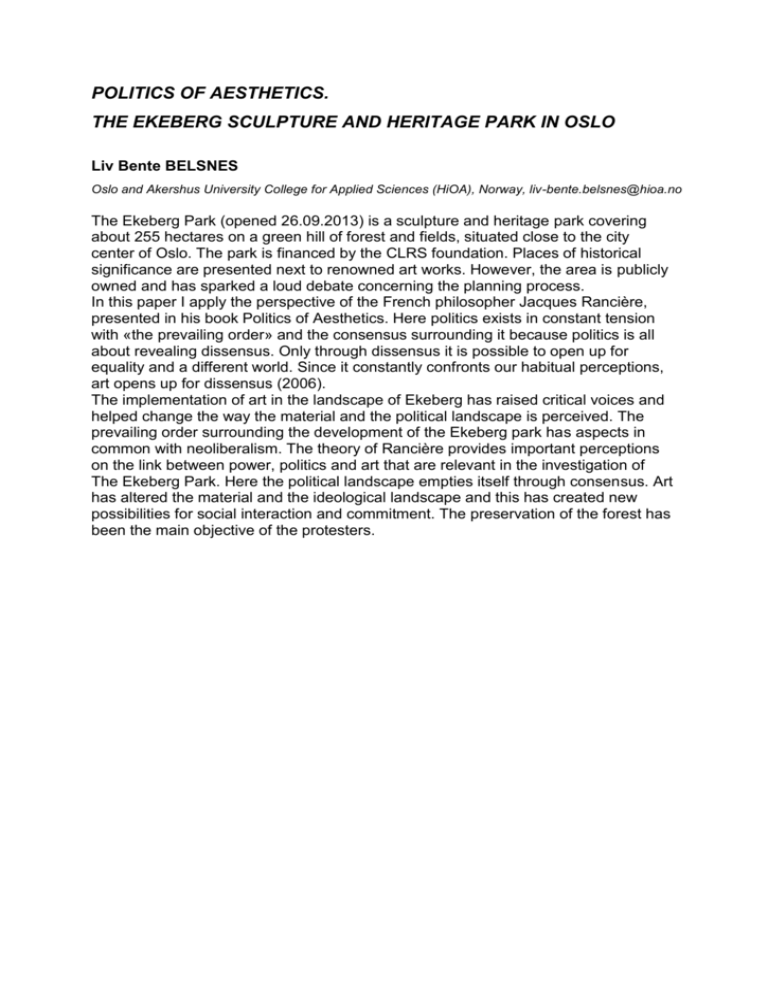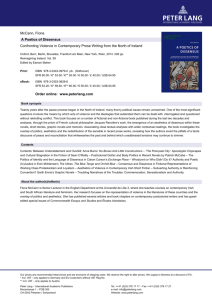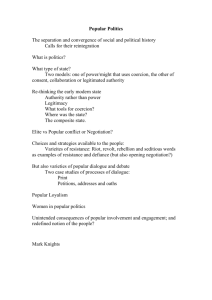POLITICS OF AESTHETICS
advertisement

POLITICS OF AESTHETICS. THE EKEBERG SCULPTURE AND HERITAGE PARK IN OSLO Liv Bente BELSNES Oslo and Akershus University College for Applied Sciences (HiOA), Norway, liv-bente.belsnes@hioa.no The Ekeberg Park (opened 26.09.2013) is a sculpture and heritage park covering about 255 hectares on a green hill of forest and fields, situated close to the city center of Oslo. The park is financed by the CLRS foundation. Places of historical significance are presented next to renowned art works. However, the area is publicly owned and has sparked a loud debate concerning the planning process. In this paper I apply the perspective of the French philosopher Jacques Rancière, presented in his book Politics of Aesthetics. Here politics exists in constant tension with «the prevailing order» and the consensus surrounding it because politics is all about revealing dissensus. Only through dissensus it is possible to open up for equality and a different world. Since it constantly confronts our habitual perceptions, art opens up for dissensus (2006). The implementation of art in the landscape of Ekeberg has raised critical voices and helped change the way the material and the political landscape is perceived. The prevailing order surrounding the development of the Ekeberg park has aspects in common with neoliberalism. The theory of Rancière provides important perceptions on the link between power, politics and art that are relevant in the investigation of The Ekeberg Park. Here the political landscape empties itself through consensus. Art has altered the material and the ideological landscape and this has created new possibilities for social interaction and commitment. The preservation of the forest has been the main objective of the protesters.











